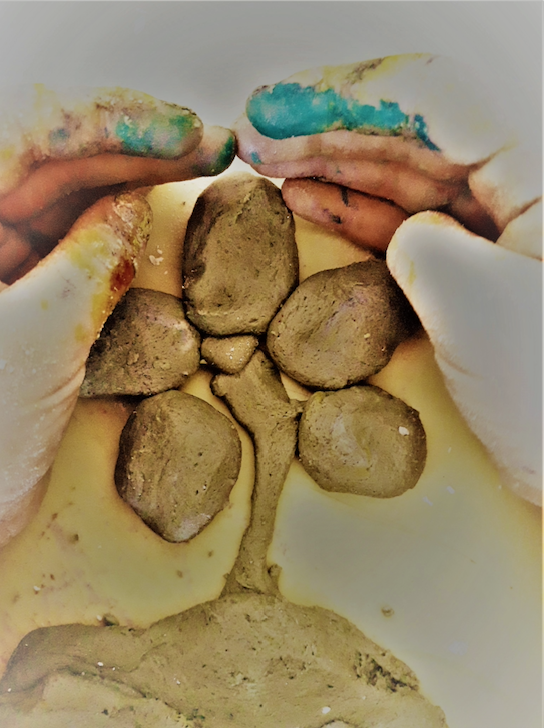Written by Dr. Andreas Antoniades of Sussex International Relations.
*The views in the following article are the personal views of the author and are not an official position of the School.*
Summary: Working in multidisciplinary research teams is challenging but necessary if we’re to tackle some of today’s big challenges such as inequality, climate change and pandemics. Based on my recent experience in the field of sustainability, I point to five factors for success when it comes to working across disciplines.
Three years ago I was given the opportunity by the Sussex Sustainability Research Programme (SSRP) to work in a multidisciplinary research team. The initial composition of the team was rather small (4-5 members) and involved both natural and social scientists investigating the impact of rising debt on deforestation and environmental sustainability. It was a transformative experience. Reflecting back, I think there are 5 key things that made this multidisciplinary experiment a success.
(a) Dividing work in a non-disciplinary way: We never divided the work along disciplinary lines (e.g. political scientists focusing on politics, economists on economics, natural scientists on deforestation, etc.). Each of us was more interested in what other members of the team had to say about ‘our’ field of expertise and how we should design the research. This willingness to ignore subject boundaries and create a truly ‘non-disciplinary space’ created a productive dynamic, that strengthened the integration and the creativity of our research team.
(b) Trust: In this non-disciplinary environment, we did not feel the need to retreat to disciplinary jargon or hide behind our disciplines when we faced difficulties, e.g. when a ‘common language’ was not there to support our communication. We made it clear from the outset that all questions in team meetings, no matter how basic, were legitimate. Through this we managed to create a safe space for knowledge exchange, and most importantly a safe space for ‘ignorance’ based on mutual respect. This built trust amongst team members, which enhanced creative cross-disciplinary thinking. In fact, some of our most interesting findings came from asking questions from our data that would not normally be asked from experienced researchers in disciplinary dominated research environments.
(c) Shared responsibility/ownership among the leading investigators: A shared ownership model maintained the involvement and commitment of the investigators to the highest possible degree. Such a governance structure created dynamics of equality, boosting levels of trust and causing ripple effects across the rest of the group. Doctoral and post-doctoral researchers did not participate as research ‘assistants’, but as fully integrated members of our team with an equal voice on all aspects of the project and its direction. Having clear rules from the outset on who would be the first author in planned publications, further increased the trust and commitment of the fellows of the team and made it feel like a truly collaborative project.
(d) Time commitment: Cross-disciplinary work is a time-consuming exercise. It takes time to develop a ‘common language’ because this can only happen through actual research interaction. It takes time for different modes of thinking to integrate in a new non-disciplinary modus-operandi. And it takes time for the above-mentioned relations of trust to be established. Maintaining the group as a cross-disciplinary space is an ongoing process, too. Frequent meetings are required to nurture and guard cross-disciplinarity, avoiding any specific discipline to dominate or determine (consciously or unconsciously) the direction of the project. Frequent meetings also help to keep the project warm even when problems arise and progress slows down. In our case, this meant weekly meetings of 45-60 minutes.
(e) Willingness to take risks: Cross-disciplinary research is ideally placed to create new knowledge, advance curiosity-driven research and reverse the over-fragmentation of knowledge in modern academia. Yet, to maximise the benefits, investigators should be willing to take risks and work outside their comfort zones. This could be experimenting with different methods or with data mining; attempting to examine the relationship between seemingly unrelated phenomena; or testing ideas that sound farfetched. In such an environment some risks will be materialised, so flexibility (both from funders and researchers) and contingency planning is critical. And of course, some mistakes along the way may be unavoidable – integral parts of a steep learning process.
Cross-disciplinary research may not be easy, but it is certainly the way forward. To address the big challenges of today and tomorrow, we need to change our knowledge production system. This is easier said than done. Decades of knowledge fragmentation and compartmentalisation have created a well-consolidated structure deeply rooted in all aspects of academic life, from how students are socialised in different academic fields to the criteria of how academic faculty is recruited and promoted. The identification of the problem is not new. But how we address it matters a great deal. Attempts to develop or impose top-down structures of cross-disciplinary collaboration can only do so much, and in some cases they seem to have generated a non-productive, instrumentalised attitude toward multidisciplinarity, including resistance towards it. To succeed, this should be a bottom-up process driven by trust and creativity. Here I pointed to five factors that may facilitate this process at the research group level. Research institutions can support this shift by creating more opportunities for informal social interaction between researchers from different fields, and by explicitly supporting and recognising the value of cross-disciplinary curiosity driven initiatives.




Leave a Reply